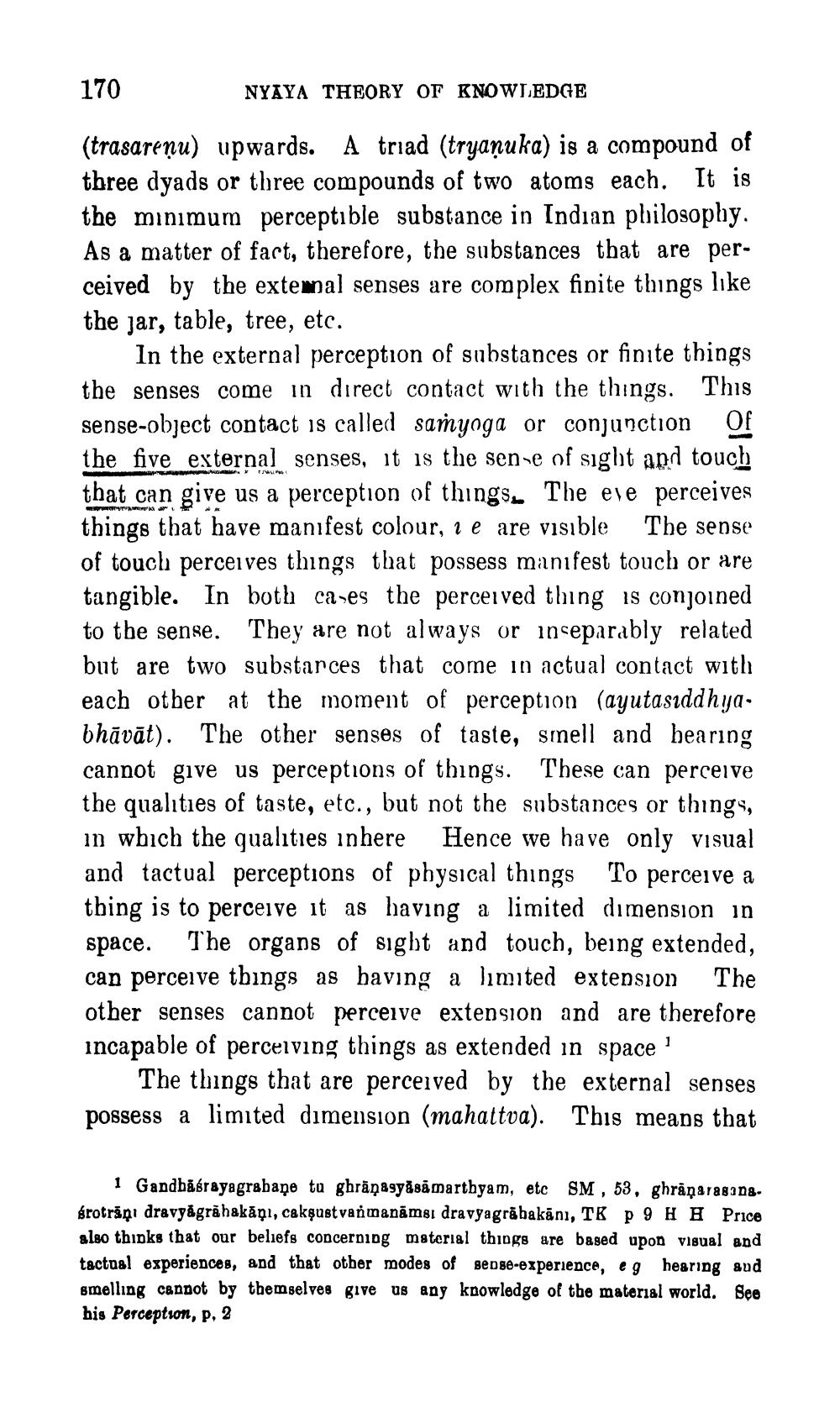________________
170
NYAYA THEORY OF KNOWLEDGE
(trasareņu) upwards. A triad (tryaņuka) is a compound of three dyads or three compounds of two atoms each. It is the minimum perceptible substance in Indian philosophy. As a matter of fact, therefore, the substances that are perceived by the extewal senses are complex finite things like the jar, table, tree, etc.
In the external perception of substances or finite things the senses come in direct contact with the things. This sense-object contact is called saryoga or conjunction of the five external senses, it is the sense of sight and touch that can give us a perception of things. The eve perceives things that have manifest colour, 2 e are visible The sense of touch perceives things that possess manifest touch or are tangible. In both cases the perceived thing is conjoined to the sense. They are not always or inseparably related but are two substarces that come in actual contact with each other at the moment of perception (ayutasıddhya: bhāvāt). The other senses of taste, smell and bearing cannot give us perceptions of things. These can perceive the qualities of taste, etc., but not the substances or things, in wbich the qualities in here Hence we have only visual and tactual perceptions of physical things To perceive a thing is to perceive it as having a limited dimension in space. The organs of sight and touch, being extended, can perceive things as having a limited extension The other senses cannot perceive extension and are therefore incapable of perceiving things as extended in space
The things that are perceived by the external senses possess a limited dimension (mahattva). This means that
1 Gandbábrayagrabaņe ta ghrāṇasyāsāmartbyam, etc SM , 53, ghrāņaragang. śrotrani dravyågrābakāņi, cakşustvanmanāmsi dravyagrābakānı, TK p 9 H H Price also thinks that our beliefs concerning material things are based upon visual and tactual experiences, and that other modes of senge-experience, eg hearing and smelling cannot by themselves give us any knowledge of the material world. See his Perception, p. 2




